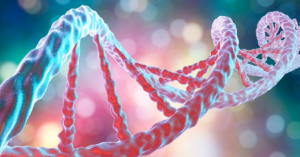
BDNF stands for Brain-derived neurotrophic factor. BDNF is a protein found in the brain that belongs to the group of neurotrophic proteins. Neurotrophic means that these proteins promote the survival and growth of new neurons during brain development and the survival and function of existing neurons in the adult brain. These are molecules shown to benefit both healthy and sick brains.
In the healthy brain, BDNF functions by binding to its partner, tropomyosin receptor kinase B (TrkB) on the outer surface of neurons. This flips a switch from the outside of the neuron to turn on critical responses inside the neuron. In a healthy brain, BDNF is very important for learning and memory, because both activities need new neuron connections. One way to naturally increase BDNF is by exercise, and this increase in BDNF by exercise is thought to mediate beneficial effects of exercise on learning and memory.
Importantly, BDNF levels are decreased in many neurodegenerative diseases including Alzheimer’s disease (AD), Parkinson’s disease (PD) and Huntington’s disease (HD) as well as Spinocerebellar ataxia type (SCA) 1 and 6. Because BDNF is so important for neuronal function and survival this decrease in BDNF in disease condition is likely to make neurons function less well and die earlier in these neurodegenerative diseases. So, the switch is not working as it should.
Preclinical studies have shown that increasing BDNF levels or activating BDNF receptor TrkB protects neurons and disease symptoms in AD, PD, HD as well as in SCA1 and SCA6. Clinical trials are currently exploring the therapeutic potential of BDNF in many neurological conditions using approaches such as gene therapy, pharmacology or exercise to increase BDNF levels. While critical, it is a difficult protein to make and deliver to brain by classic technologies. One example of BDNF application is current phase 1 gene therapy clinical trial for AD and mild cognitive impairment conducted at University of California San Diego. This will introduce the BDNF gene by virus to boost production of BDNF levels.
If you would like to learn more about BDNF, take a look at these resources by 2-Minute Neuroscience and Coachbit.
Written by Marija Cvetanovic, PhD and edited by Ray Truant, PhD.
Read Other SCAsource Snapshot Articles

Snapshot: ¿Qué es la Distonía?
La distonía es un trastorno que afecta a la forma en que una persona se mueve. Específicamente, las personas con distonía tienen contracciones musculares involuntarias, que pueden causar posturas de Read More…

Snapshot: What is Brain-derived neurotrophic factor (BDNF)?
BDNF stands for Brain-derived neurotrophic factor. BDNF is a protein found in the brain that belongs to the group of neurotrophic proteins. Neurotrophic means that these proteins promote the survival Read More…

Snapshot: What is CACNA1A?
CACNA1A is a gene that contains the genetic information needed to make a transcription factor and a part of a calcium channel. The gene is mainly expressed in the brain Read More…



